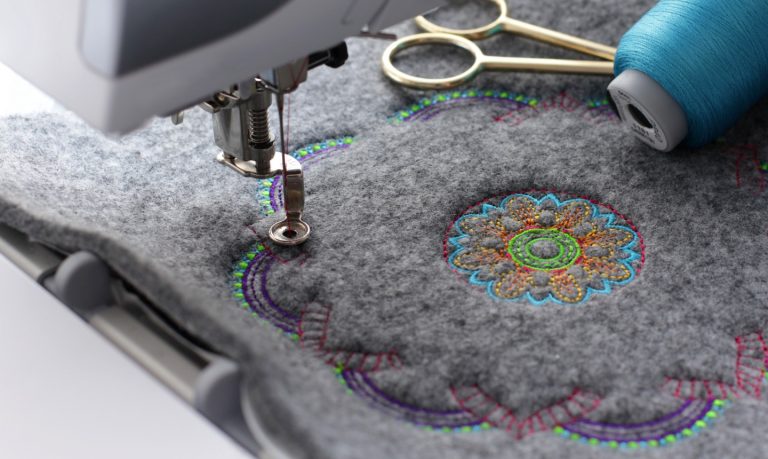Understanding the Embroidery Digitizing Refine: Your Ultimate Guide
Embroidery digitizing is a thorough craft that needs accuracy and competence to translate detailed styles right into digital styles for machine needlework. As artisans get started on this journey to understand the embroidery digitizing procedure, a comprehensive understanding of the fundamentals establishes the foundation for quality. Nonetheless, beyond the fundamental understanding exists a world of advanced software, specialized tools, and nuanced methods waiting to be discovered. By diving right into the subtleties of digitizing, one can open a globe of imaginative opportunities and boost their needlework tasks to brand-new elevations.

Understanding Embroidery Digitizing Basics
Embroidery digitizing basics develop the foundation upon which elaborate styles are converted right into machine-readable layouts for specific sewing. This initial action in the embroidery digitizing process is vital for making certain that the last embroidered item is a loyal depiction of the initial layout. Understanding needlework digitizing basics involves understanding vital principles such as stitch types, stitch direction, density, underlay, and draw settlement.
Stitch types play an important duty in determining the aesthetic and textural outcome of the embroidered style. By selecting the appropriate stitch type, whether it be satin, fill, or running stitch, digitizers can achieve the desired effect and boost the overall top quality of the needlework. Furthermore, stitch direction affects the circulation and dimension of the style, while thickness identifies the spacing and insurance coverage of the stitches.
Moreover, rug sewing provides security to the layout by protecting the textile and protecting against distortion during the embroidery procedure. Draw payment is another important consideration to counteract the natural tendency of material to agreement when stitched. Mastering these embroidery digitizing essentials is basic for creating professional-quality stitched items.
Picking the Right Digitizing Software Program
Picking the ideal digitizing software application is a crucial choice that significantly influences the effectiveness and high quality of the embroidery digitizing process. Digitizing for Embroidery. When choosing the right digitizing software program, it is vital to take into consideration factors such as the complexity of layouts you plan to produce, the user-friendliness of the software program, the level of consumer support supplied, and the compatibility with your embroidery device
There are numerous digitizing software choices available out there, varying from basic programs for beginners to advanced software for expert digitizers. Some preferred choices include Wilcom EmbroideryStudio, Hatch Embroidery Software Application, and PulseID. These software program plans supply a vast array of tools and functions to check over here aid you create detailed layouts effortlessly.
Prior to deciding, it is a good idea to discover the different software choices with complimentary tests or demonstrations to figure out which one ideal suits your needs. Furthermore, reviewing reviews and looking for referrals from knowledgeable digitizers can offer valuable insights right into the strengths and weaknesses of each software (Digitizing for Embroidery). By carefully examining your demands and contrasting the features of different digitizing software program, you can make an enlightened option that enhances your needlework digitizing workflow
Digitizing Devices and Methods

Optimizing Design Settings for Embroidery
Grasping the intricacies of layout settings is basic in attaining ideal outcomes in the needlework digitizing process, structure upon the structure laid by comprehending digitizing devices and methods. When optimizing layout settings browse around this site for embroidery, it is necessary to consider variables such as stitch type, density, padding, pull payment, and enrollment. Registration settings line up various elements of the style properly, maintaining overall style honesty.

Troubleshooting Common Digitizing Issues
When encountering typical digitizing concerns during the needlework process, it is vital to understand the source and carry out reliable options promptly. One common trouble is stitch density problems, where stitches may be also dense, triggering the material to tighten, or too sparse, bring about voids in the style. Adjusting the stitch thickness settings in the digitizing software program can assist fix this problem.
One more frequent challenge is thread breaks during the needlework process. This can happen due to numerous reasons such as wrong stress settings, dull needles, or making use of low-grade thread. Making sure correct maintenance of the embroidery equipment, consisting of regular needle adjustments Extra resources and stress changes, can decrease the occurrence of thread breaks.
In addition, layout registration mistakes can cause misaligned components within the needlework style. Inspecting the style alignment in the digitizing software and making needed adjustments before stitching can help in preventing this problem. By dealing with these common digitizing concerns promptly and successfully, you can make certain a smoother embroidery procedure and high-quality finished products.
Conclusion
To conclude, understanding the embroidery digitizing procedure calls for a strong understanding of the essentials, the appropriate option of software, and knowledge of tools and strategies. Optimizing layout settings and troubleshooting typical digitizing concerns are critical steps in ensuring high-grade embroidery outcomes. By following these steps faithfully, one can attain precision and effectiveness in the digitizing procedure.